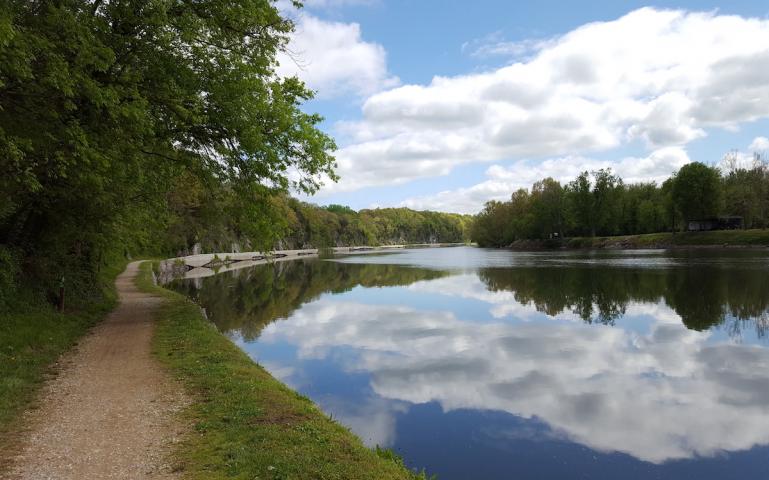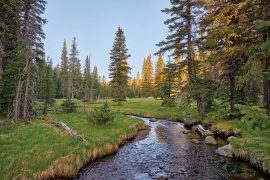
It’s day two of a relentless, cold rain. My bike’s kickstand sinks precariously deep into the muddy ground under the weight of my panniers. I stare through the rain at a National Park Service sign describing workers’ struggles building the Chesapeake and Ohio Canal, or the C&O as it’s been known for nearly 200 years.
“Laborers worked 12 to 15 hour days in all kinds of weather, beginning at sunup and continuing to sundown,” the NPS narrative says. “The workers would spend much of their day in the ditches, mired in mud or water up to the waist. Injuries were common on the line, and maiming and death far from rare.”
I look at the sign’s drawn reenactment of violence that would break out between workers under these harsh conditions. In my state of discomfort, I wonder how my dad and I will fair this trip—especially since we have more than 100 miles and four more nights to go.
My dad flew from California to join me in biking the 184.5-mile, car-free route along the C&O Canal towpath from Cumberland, Maryland to Washington, D.C. We chose late April assuming we’d hit a sweet spot between winter’s chill and summer’s heat. Instead, the trip is teaching us that nature always has her own plans.
George Washington long dreamed of making the Potomac River a navigable route for moving harvests from the Ohio River Valley through the Appalachian Mountains and to the markets of the east. His dream was partly realized when President John Quincy Adams turned the first shovelful of dirt for the C&O Canal in 1828. It was a portentous ceremony: On Quincy Adams’s first try, the shovel pinged off rocks and roots, foreshadowing the construction difficulties ahead. Originally planned to stretch from D.C. to Pittsburgh, construction stopped in Cumberland in 1850 as expanding railroad networks made the whole effort obsolete. Commercial use of the canal ceased in 1924 after severe flood damage to infrastructure. The land was placed under NPS jurisdiction in 1938 for the bargain price of $2 million.
After the government’s acquisition, Congress presented a proposal to turn the canal right-of-way into a parkway for automobiles. The Washington Post supported the idea, but Associate Supreme Court Justice William O. Douglas, one of the most influential conservationists of…





